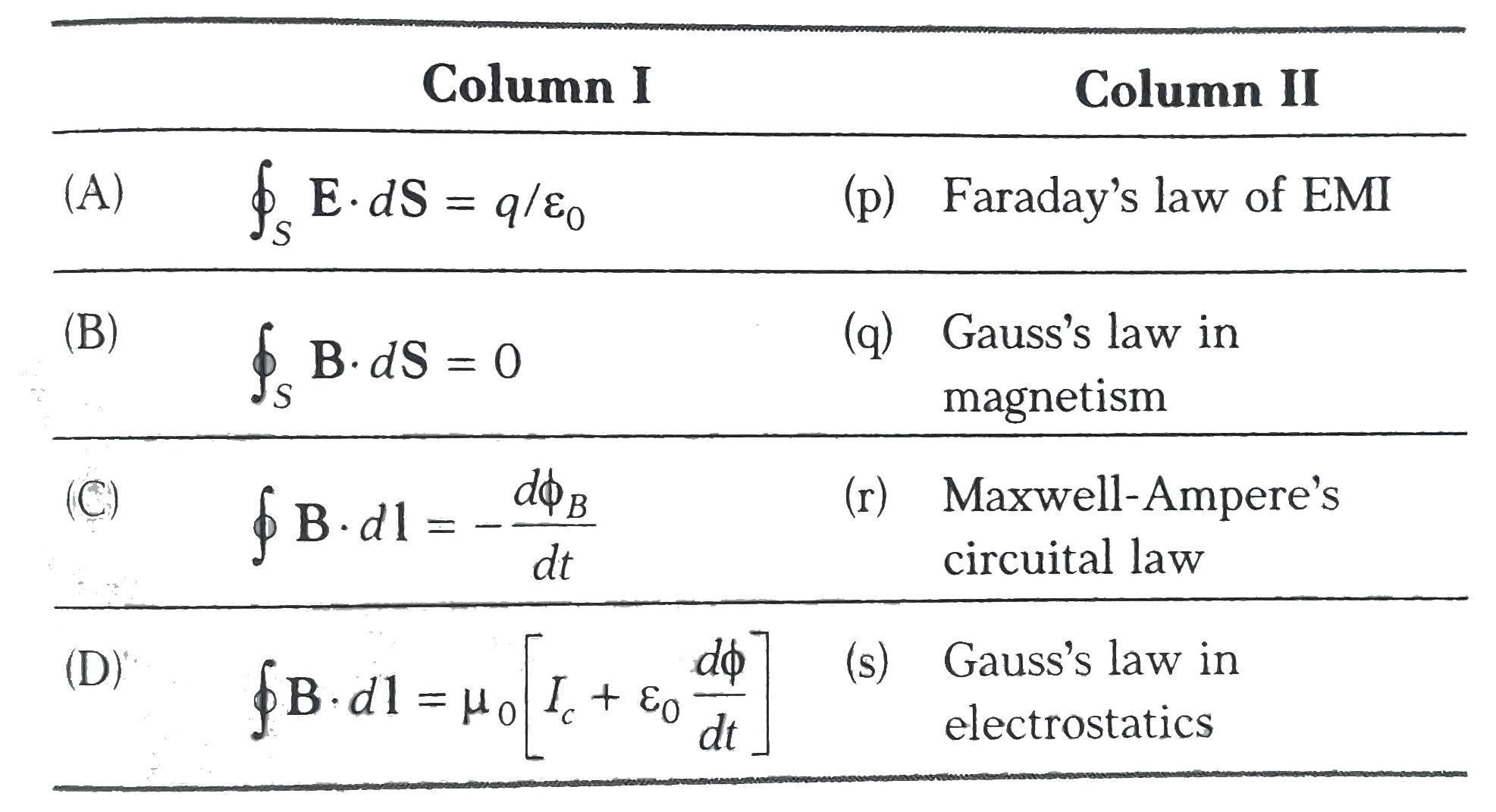In electromagnetic spectrum, the frequencies of γ-rays and X−rays and ultraviolet rays are denoted by n1,n2 and n3 respectively, then
n1>n2>n3
n1<n2<n3
n1>n2<n3
n1<n2>n3
The correct Answer is:A
To solve the problem, we need to compare the frequencies of gamma rays, X-rays, and ultraviolet rays in the electromagnetic spectrum. We denote the frequencies as follows:
- n1: frequency of gamma rays
- n2: frequency of X-rays
- n3: frequency of ultraviolet rays
Step 1: Understand the relationship between wavelength and frequency
In the electromagnetic spectrum, the relationship between wavelength (λ) and frequency (ν) is given by the equation:
c=λν
where c is the speed of light. This implies that:
ν=cλ
Thus, frequency is inversely proportional to wavelength.
Step 2: Order the wavelengths of the electromagnetic spectrum
From the electromagnetic spectrum, we know the order of wavelengths for these types of radiation:
- Gamma rays have the shortest wavelength.
- X-rays have a longer wavelength than gamma rays but shorter than ultraviolet rays.
- Ultraviolet rays have the longest wavelength among the three.
This can be summarized as:
λgamma<λx-ray<λultraviolet
Step 3: Determine the order of frequencies
Since frequency is inversely proportional to wavelength, the order of frequencies will be the opposite of the order of wavelengths:
- Since gamma rays have the shortest wavelength, they have the highest frequency.
- X-rays have a higher frequency than ultraviolet rays but lower than gamma rays.
- Ultraviolet rays have the longest wavelength, hence the lowest frequency.
Thus, we can write:
n1>n2>n3
Conclusion
The correct relationship among the frequencies is:
n1>n2>n3
Final Answer
The answer is n1>n2>n3.
---
- n2: frequency of X-rays
- n3: frequency of ultraviolet rays
In the electromagnetic spectrum, the relationship between wavelength (λ) and frequency (ν) is given by the equation:
c=λν
where c is the speed of light. This implies that:
ν=cλ
Thus, frequency is inversely proportional to wavelength.
From the electromagnetic spectrum, we know the order of wavelengths for these types of radiation:
- Gamma rays have the shortest wavelength.
- X-rays have a longer wavelength than gamma rays but shorter than ultraviolet rays.
- Ultraviolet rays have the longest wavelength among the three.
λgamma<λx-ray<λultraviolet
Since frequency is inversely proportional to wavelength, the order of frequencies will be the opposite of the order of wavelengths:
- Since gamma rays have the shortest wavelength, they have the highest frequency.
- X-rays have a higher frequency than ultraviolet rays but lower than gamma rays.
- Ultraviolet rays have the longest wavelength, hence the lowest frequency.
n1>n2>n3
The correct relationship among the frequencies is:
n1>n2>n3
The answer is n1>n2>n3.
Topper's Solved these Questions
- ELECTROMAGNETIC WAVESBook:DC PANDEY ENGLISHChapter:ELECTROMAGNETIC WAVESExercise:Match the columns
Explore 2 Videos
- ELECTROMAGNETIC INDUCTIONBook:DC PANDEY ENGLISHChapter:ELECTROMAGNETIC INDUCTIONExercise:Medical entrances gallery
Explore 25 Videos
- ELECTROSTATIC POTENTIAL AND CAPACITORSBook:DC PANDEY ENGLISHChapter:ELECTROSTATIC POTENTIAL AND CAPACITORSExercise:(C) Chapter exercises
Explore 50 Videos
Similar Questions
Math column I with Column II and select the correct options from the choices given below the columns.

View SolutionA long solenoid has 1000 turns. When a current of 4A flows through it, the magnetic flux linked with each turn of the solenoid is 4×10−3Wb. The self-inductance of the solenoid is
View SolutionA capacitor of 2μF is charged as shown in the figure. When the switch S is turned to position 2, the percentage of its stored energy dissipated is

View SolutionThe frequencies of X-rays, γ-rays and ultraviolet rays are respectively a,bandc .Then
View SolutionIn electromagnetic spectrum, the frequencies of γ-rays and X−rays and ultraviolet rays are denoted by n1,n2 and n3 respectively, then
View Solutionनिम्नलिखित में कौन-सा विधुतचुंबकीय नहीं है ? क्यों ?
अवरक्त किरणे, पराबैंगनी किरणे, रेडियो तरंगे, ध्वनि तरंगे, गामा-किरणे, X-किरणे ।
View SolutionIn electromagnetic spectrum , the frequencies of alpha - rays , X - rays and ultraviolet rays are denoted by n_(1) , n_(2) and n_(3) respectively then
View Solutionनिम्न विद्युत् चुंबकीय विकिरणों को उनकी आवृत्ति के सापेक्ष अवरोही क्रम में लिखिए-
अवरक्त तरंगें, X- किरणें, पराबैंगनी तरंगें और गामा किरणें |
View Solutionγ− किरणों, X- किरणों तथा पराबैंगनी किरणों की आवृत्ति क्रमशः a,b और c है, तो घटते क्रम से है -
View Solutionनिम्नलिखित में कौन - कौन विद्युत - चुम्बकीय स्पेक्ट्रम में है ?
α - किरणें, β-किरणें , कैथोड किरणें , γ-किरणें , पराबैंगनी किरणें , माइक्रो तरंगे, पराध्वनिक तरंगें , रेडियो तरंगें , अवरक्त किरणें।
इन्हे आवृत्ति के बढ़ते क्रम में व्यवस्थित कीजिए।
View SolutionWhat is an electromagnetic spectrum? Arrange the given electromagnetic radiations in the decreasing order of their frequencies. Infrared rays, X-rays, UV rays, gamma rays.
View SolutionThe frequencies of X-ray, γ-rays and ultraviolet rays are respectively a, b, and c. Then :
View Solutionऐक्स किरणों, गामा किरणों और पराबैंगनी किरणों की आवृत्तियाँ क्रमश: a,b और c है। तब
View SolutionArrange the following electromagnetic waves in order in increasing frequency : γ -rays, microwaves, infrared rays and ultraviolet rays.
View SolutionThe frequency of X-rays, γ-rays and ultraviolet rays are respectively a, b and c, then:
View Solution
